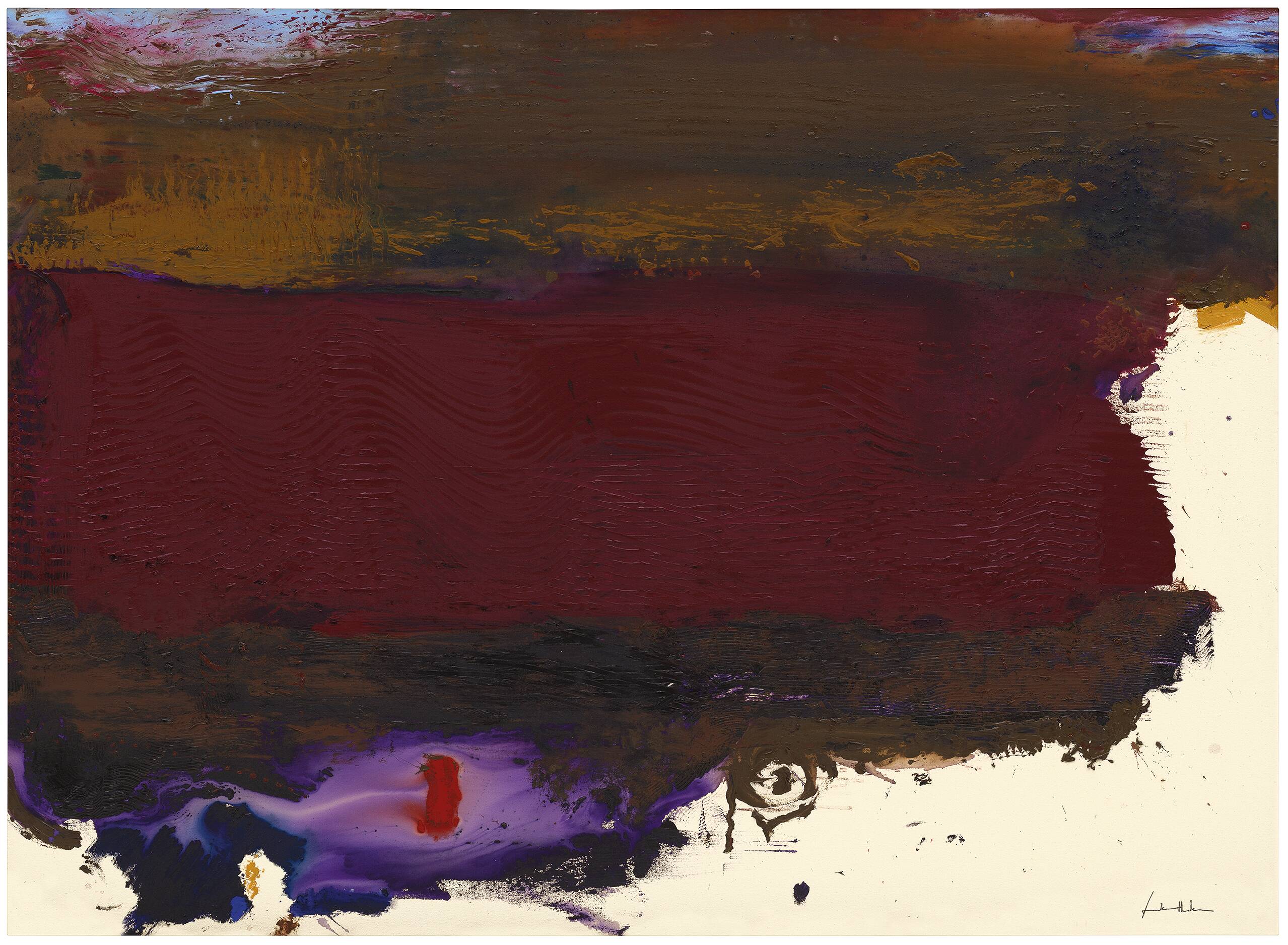Santorini
1965Helen Frankenthaler (b. 1928; d. 2011) is recognized as one of the great American artists of the 20th century. Her development from Abstract Expressionism to Color Field painting consistently challenged traditional conventions over the course of 50 years. Her innovative “soak-stain” technique, first deployed in 1952 with solvent-thinned oil paint, and then after 1962 with acrylic, reinvigorated abstract art, with pigments brushed, dripped, poured, sponged, and dragged across unprimed bolts of canvas laid out on the studio floor. Her command of color and space, coupled with a process that thrived on intuitive spontaneity, yielded a prolific stream of paintings on canvas and paper.
As a young painter living a bohemian life during the 1950s, Frankenthaler met kindred artists of the New York School—David Smith, Lee Krasner, Jackson Pollock, Willem and Elaine de Kooning, Franz Kline, Adolph Gottlieb, and Barnett Newman—through the American art critic Clement Greenberg. Her early encounter with Pollock’s work at Betty Parsons’s New York gallery in 1951, and as a visitor to Pollock’s studio in Springs, East Hampton, on Long Island, had a major impact. Pollock’s black-and-white enamel paintings from this period inspired a full-bodied gestural abstraction full of signs and symbols. Following Pollock’s lead, Frankenthaler rolled out unsized, unprimed canvas, applied paint using various unorthodox methods, and then manipulated the medium with brushes, sponges, and fingers. Frankenthaler’s soak-stain technique continued to change as she changed. What remained constant was her belief that a successful abstract painting should achieve a dynamic sense of space.
In the early 1960s, Helen Frankenthaler transitioned from oil to acrylic paint, a faster-drying, less translucent more opaque medium. She adapted acrylic to her stain techniques with impressive results. Santorini, from 1965, is titled after the Greek island known for its expansive vistas of the Aegean Sea. Athens and the Greek Islands were part of an extended tour that Frankenthaler made with Motherwell and his two daughters, Lise and Jeannie, during the summer of 1965. Their itinerary also included Paris, Venice, and London.
The painting, a prime example of Frankenthaler’s poetic abstraction, distils amorphic and geometric forms into a pared-down configuration suggesting elements of land, sea, and sky. The reference to Santorini, the affinity to an expansive sea and a rugged coastline, provides the entry point to abstract image rife with ambiguity.
Original title
Santorini
Date
1965
Medium/Materials
Acrylic on canvas
Credit line
Guggenheim Bilbao Museoa. Helen Frankenthaler Foundation’s donation

